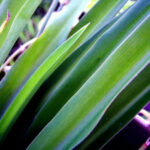One of the ways to stretch that ever shrinking grocery budget is by raising a few vegetables in the yard. A home vegetable garden can provide a family with “in season” fresh vegetables, which are both healthier and superior to anything that can be purchased at the grocery store.
For families short on gardening space, it’s still possible to plant those garden vegetables by thinking creatively about the space you have to work with. The only requirements needed for growing vegetables are at least 6 hours of sunlight, good soil, and water.
Planning the small space garden
One of the biggest mistakes that new gardeners often make is planting a crop that takes up lots of room in proportion to the yield. While vegetables like pumpkin, carrots, potatoes, and corn are fun to grow, they take up piles of room and aren’t smart vegetable choices for a small space garden.
If saving money at the grocery store is the goal, then choosing wisely is equally as important. A good rule of thumb to follow is to plant only those vegetables (or fruits) that your family eats the most of and are the most expensive to buy at the market. These might include things like tomatoes, peppers, beans, beets, snap peas, spinach, egg plant, okra, rhubarb, and exotic vegetable varieties. Not sure what to plant as a beginner? Check out this this article which lists easy vegetables for beginning gardeners.
Once you’ve identified the vegetables that are the most practical for you to grow, it’s time to look at the space you have to work with.
Vining Vegetables
If you have a trellis, porch rail, patio support, or fence, these structures can be used to support a vining type of vegetable. Pole bean, pole peas, cucumbers, and some squash varieties can be trained to grow up instead of along the ground. For a concrete patio or wooden deck, these vegetables can be planted in a barrel or tub and set next to the rail to grow.
Fences and trellises are also great for growing vining fruits such as grapes or berries.
Mix up vegetables in the flower bed
If you have a small flower bed that you just can’t part with, try mixing up a few vegetables in with the flowers. Flower beds are a fabulous place to mix in some quick yielding veggies such as radishes which can be ready to eat as soon as 21 days. Green onions, garlic, and leeks also grow well in flower beds.
In one of my shrub beds, I’ve planted several rhubarb plants to produce one of the season’s earliest crop of vegetables. By the time the shrubs have “leafed out” for the spring, the rhubarb is ready for harvest. Rhubarb stalks are cut to the ground during harvest and the plant “disappears” until the following spring. Click here for my article about growing rhubarb in your small space garden.
Container gardening is a method of gardening in which yard space isn’t necessary at all. Containers can be placed on front steps, exterior staircases, patios, decks, or even on the roof. For small containers, stick with dwarf or pixie vegetable varieties. Large containers measuring at least 5 gallons will work for large “bush” vegetables such as tomatoes or eggplant.
Herbs do particularly well in small spaces and small containers. If you need some ideas for creating a small herb garden, visit my article on small space herb gardening.
Rotating crops
Certain vegetables can be planted early in the spring, such as peas and spinach for a early summer harvest. Once harvested, these vegetables can be removed and a summer crop planted in the same place. Rotating crops in this method will also help maximize the space in your yard.
Early vegetables include peas, spinach, radishes, and broccoli. Summer vegetables include tomatoes, peppers, squashes, and beans. To maximize the crop yield, start the summer plants in pots about 4-6 weeks before they go into the space vacated by the spring vegetables.
Make some plant towers
My AC friend Kerry, recently described a method of vertical gardening in her article Growing Strawberries. Kerry uses PVC pipe to make plant towers for holding strawberry plants. Follow her directions for making your own plant towers which can be used to raise herbs, strawberries, and bush beans in an area of less than six by six inches. Small space gardening doesn’t get much smaller than that!
Gardening in a small space is all about thinking creatively for places where vegetables can be grown. As long as you have a little bit of outside space that receives at least six hours of sunshine, you can have a small space garden.




